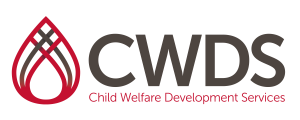CWDS Curriculum
Sustainability as a Child Welfare Worker: Building Resiliency
Level: Advanced Practice – Lineworker, Supervisor
Credits: 3
Intended Audience: New and experienced lineworkers and supervisors
Intended Objectives:
- To examine the definition of burnout and vicarious/secondary trauma,
- To distinguish how vicarious trauma and burnout are different and how they may intersect
- To improve ability to identify symptoms of vicarious/secondary trauma and burnout.
- To identify tools that are available to help assess vicarious/secondary trauma
- To value the ethical obligation to address vicarious/secondary trauma
- To develop strategies to address vicarious/secondary trauma on an individual, peer and organizational level.
Topics Include:
- Review of Definitions of burnout, vicarious trauma, secondary trauma
- Causes of vicarious trauma
- Cultural issues impact
- Signs and Symptoms, assessment for vicarious trauma
- Strategies for addressing vicarious trauma
- Development of individual plans to mitigate vicarious trauma
CalSWEC Competencies Addressed:
3.13 Student demonstrates the ability and self- awareness to assess his or her own value conflicts or emotional responses to clients, co- workers, and situations and seeks consultation when needed.
7.3 Student is able to plan, prioritize, and effectively complete activities and tasks within required time frames.
7.4 Student is aware of organizational risk management issues and is able to prevent or resolve potentially harmful situations.
7.6 Student is aware of potential work-related stress factors and is able to develop and advocate for self-care and other strategies to reduce their effects.
8.1 Student understands how professional values, ethics, and standards influence decision- making and planning in public child welfare practice.
8.6 Student demonstrates knowledge of how organizational structure, climate, and culture affect service effectiveness, worker productivity, and morale.
Posted In:Worker Retention



